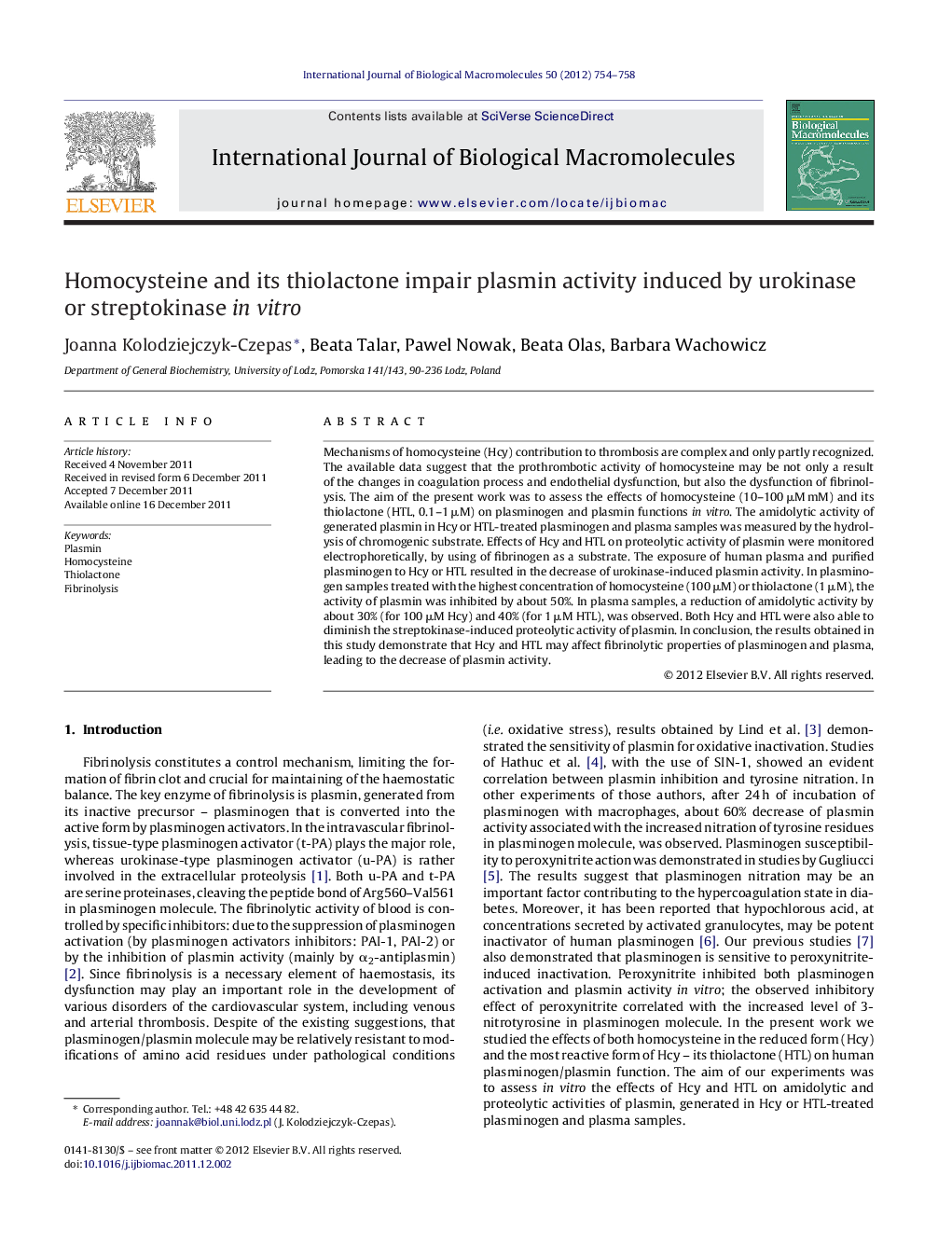| Article ID | Journal | Published Year | Pages | File Type |
|---|---|---|---|---|
| 8335019 | International Journal of Biological Macromolecules | 2012 | 5 Pages |
Abstract
Mechanisms of homocysteine (Hcy) contribution to thrombosis are complex and only partly recognized. The available data suggest that the prothrombotic activity of homocysteine may be not only a result of the changes in coagulation process and endothelial dysfunction, but also the dysfunction of fibrinolysis. The aim of the present work was to assess the effects of homocysteine (10-100 μM mM) and its thiolactone (HTL, 0.1-1 μM) on plasminogen and plasmin functions in vitro. The amidolytic activity of generated plasmin in Hcy or HTL-treated plasminogen and plasma samples was measured by the hydrolysis of chromogenic substrate. Effects of Hcy and HTL on proteolytic activity of plasmin were monitored electrophoretically, by using of fibrinogen as a substrate. The exposure of human plasma and purified plasminogen to Hcy or HTL resulted in the decrease of urokinase-induced plasmin activity. In plasminogen samples treated with the highest concentration of homocysteine (100 μM) or thiolactone (1 μM), the activity of plasmin was inhibited by about 50%. In plasma samples, a reduction of amidolytic activity by about 30% (for 100 μM Hcy) and 40% (for 1 μM HTL), was observed. Both Hcy and HTL were also able to diminish the streptokinase-induced proteolytic activity of plasmin. In conclusion, the results obtained in this study demonstrate that Hcy and HTL may affect fibrinolytic properties of plasminogen and plasma, leading to the decrease of plasmin activity.
Related Topics
Life Sciences
Biochemistry, Genetics and Molecular Biology
Biochemistry
Authors
Joanna Kolodziejczyk-Czepas, Beata Talar, Pawel Nowak, Beata Olas, Barbara Wachowicz,
